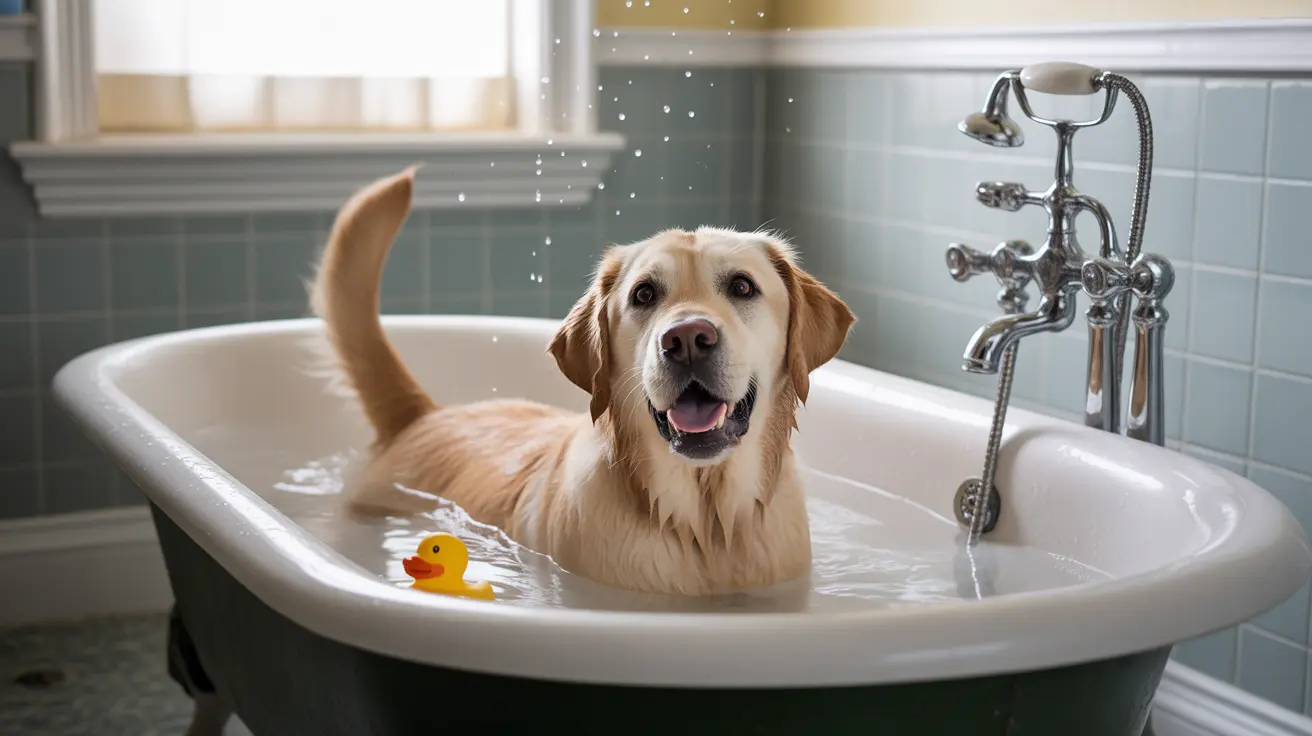Understanding Your Dog's Bath Time Reactions
Dogs' reactions to baths are influenced by several key factors, including breed characteristics, early experiences, and individual personality traits. Water-loving breeds like Labrador Retrievers and Portuguese Water Dogs often show more natural enthusiasm for bathing, while other breeds may need more encouragement and patience.
It's important to note that a dog's enjoyment of swimming doesn't necessarily translate to bath time comfort. The controlled environment of a bath can feel restrictive compared to the freedom of playing in natural water sources.
Common Reasons Why Dogs May Dislike Baths
Physical Discomfort
Many dogs experience physical discomfort during baths due to:
- Slippery surfaces causing instability
- Water temperature being too hot or cold
- Sensitive skin reactions to shampoo
- Water or soap getting into eyes or ears
Environmental Stress
The bathing environment itself can trigger anxiety through:
- Confined spaces
- Loud water sounds
- Unfamiliar smells
- Loss of control over the situation
Creating a Positive Bath Time Experience
Making bath time enjoyable requires patience and preparation. Start by:
- Using non-slip mats for security
- Keeping water at a comfortable temperature
- Using pet-specific, gentle shampoos
- Offering treats and positive reinforcement throughout the process
The Impact of Regular Bathing on Dog Health
Proper bathing frequency is crucial for maintaining your dog's skin and coat health. While under-bathing can lead to dirt buildup and skin issues, over-bathing can strip natural oils and disrupt the skin's microbiome. The ideal bathing schedule varies based on your dog's coat type, activity level, and overall health.
Post-Bath Behavior Explained
The infamous "zoomies" after a bath are completely normal. Dogs may race around, roll on carpets, or rub against furniture to:
- Release pent-up energy
- Dry themselves naturally
- Restore their familiar scent
- Express relief that the bath is over
Frequently Asked Questions
Why do some dogs like baths while others dislike them?
Dogs' reactions to baths are influenced by their breed, early experiences, and individual temperament. Previous positive or negative associations with water and bathing can significantly impact their attitude.
How can I make bath time less stressful for my dog?
Use positive reinforcement, maintain a calm environment, ensure proper water temperature, provide stable footing, and make the experience as pleasant as possible through treats and praise.
How often should I bathe my dog to keep their skin healthy?
Bathing frequency depends on your dog's coat type, activity level, and skin condition. Most dogs need baths every 4-8 weeks, though some may require more or less frequent bathing based on their specific needs.
What causes dogs to act wild or roll around after a bath?
This behavior helps dogs release tension, dry themselves, and restore their natural scent. It's a normal response to feeling clean and different from their usual state.
Are there specific shampoos or techniques that help dogs who fear baths?
Use gentle, pet-specific shampoos with minimal fragrance, and consider products designed for anxious dogs. Techniques like gradual desensitization and starting with small amounts of water can help fearful dogs become more comfortable with bathing.
Conclusion
While not all dogs naturally enjoy baths, most can learn to tolerate or even appreciate them with proper training, patience, and positive associations. Understanding your dog's specific needs and concerns about bathing can help you create a more comfortable and stress-free experience for both of you.






